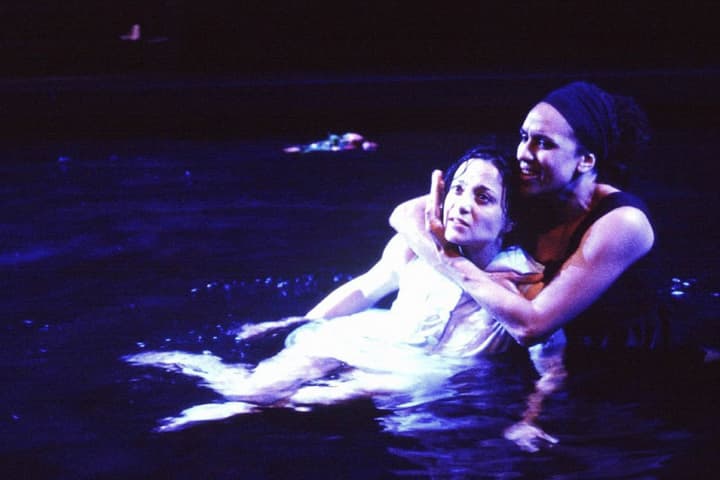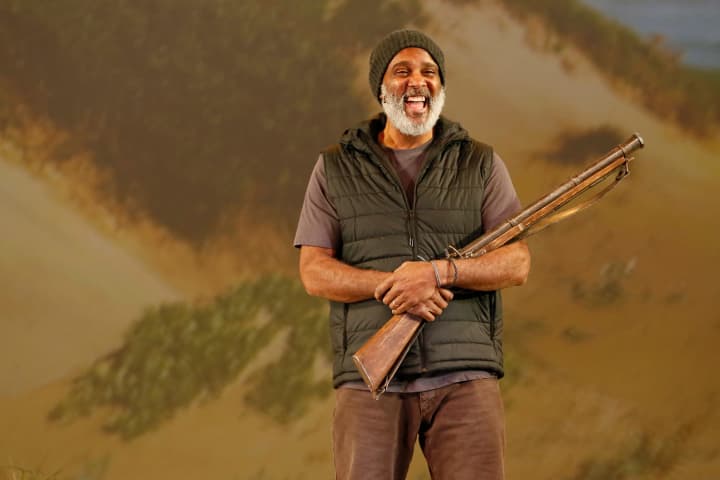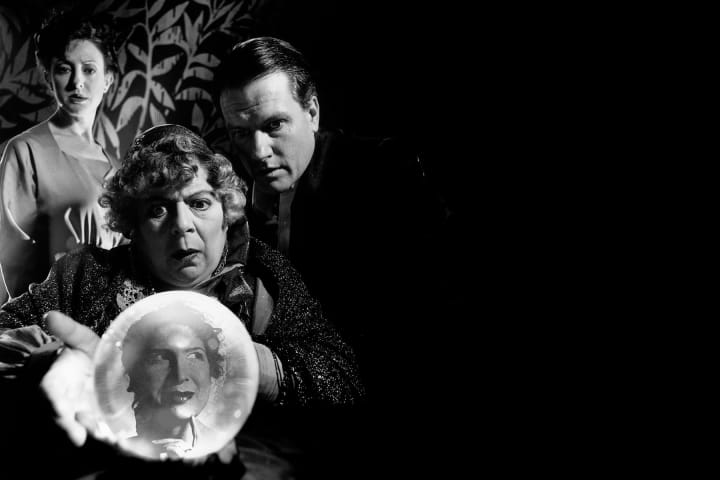Kerry Saxby has worked with MTC’s production team for three decades. With a background in industrial technology, his current role sees him specialising in lighting and sound, but his job involves problem solving varied technical hurdles big and small.
A standard revolve is a round floor or turntable within the stage floor that spins around a central pivot point, driven by a motor and controlled by an automation operator. A motor is connected to the turntable by a friction drive. The revolve is modular by design, made up by a number of steel wedges with timber on top (like pieces of a pie) and wheels on the bottom, which fit together. A painted scenic floor is then added on top to disguise the revolve.
MTC owns five revolves, ranging from 1.2 metres to 14 metres in diameter. The 14-metre revolve weighs around four tonnes, is wider than the stage in the Sumner, and extends beyond the proscenium arch!
Doughnuts, rehearsals and building revolves
Structurally the revolves are all made in a similar way. The oldest revolve MTC has is nearly 40 years old. The newest – a ‘doughnut’ revolve – was manufactured last year for Shakespeare in Love (below is the Shakespeare in Love tower turning for the first time after being manufactured in the workshop).

Each revolve is constructed on a metal frame. Castors are set into this frame and the frame is topped with plywood. Each of the 12 metal frame segments of the 14-metre turntable require up to six people to place each into position for assembly. The finished height of the revolve is up to 220mm. This means that the area around the revolve must also be built up, to ensure the actors have a level surface on which to perform (this is called a surround). One semitrailer is required to transport the 14-metre revolve with another semi required for the surround.
MTC uses a friction drive to connect a motor to the turntable. The motor is mounted in a frame and connected to the horizontal drive wheel via a chain. The pneumatic tyre is pushed up against the edge of the turntable. Alongside the drive is a small encoder wheel that reads the position of the turntable. Pre-programed positions are loaded into the computer-based control system and include information about speed, acceleration and deceleration times. Each set of information forms a cue, and a great deal of time goes into programming revolve cues, to ensure the safety of cast and crew. During each performance, the automation operator initiates the cue on the call of the stage manger (who is also coordinating other show elements including lighting, scenery and sound).
If a show is to include a revolve as part of the set design, MTC will install the revolve into the rehearsal room. This assists all in rehearsals – actors can become familiar with a floor that moves beneath them; the director can choreograph large set-element movements with the actors’ movements; stage management can ensure that every person and every prop is in the right place at the right time; lighting designers can watch the position of the actors in order to inform and refine their lighting designs; and composers can watch the timing of revolve cues, to coordinate their composition with the movement of the turntable. Having a revolve in the rehearsal room informs safe practices that will continue when the show is moved into the theatre.

The Emerald City set, on a revolve
Photo: Jeff Busby, 2020
John used one of the smaller revolves
Photo: Jeff Busby, 2017
The Three Little Words set, on a revolve
Photo: Jeff Busby, 2017
Look closely and you can see the outline of the revolve in the sand of the Jasper Jones set
Photo: Jeff Busby, 2016The benefits of using a revolve
Why use a revolve? A revolve can move a large amount of scenery and/or props in a short time. It allows for complex set changes to happen quickly and without interruption to the flow of the show. Or a scenery change can be artistically designed to become an integral part of the show.
Our recent production of Torch the Place was an example of a revolve that facilitated fast transitions between different locations. But perhaps MTC’s most ambitious revolve configuration, however, was for our 2016 production of Double Indemnity, which utilised three axes of revolve – this consisted of an outer ring, an internal ring and a central dais, all of which could rotate independently of each other at different speeds and in different directions. In this case, the central dais sat on top of the internal ring, and for cues where the central dais needed to remain static the motors still actually turned but in the opposite direction of the internal ring. This gave the illusion that the central dais was static but it was actually moving.
Below, you can see an extract of the animated storyboard for the revolve in that show:
Have something to ask MTC? You can submit your question and in the coming weeks it might be yours that we answer.
Published on 20 August 2020





